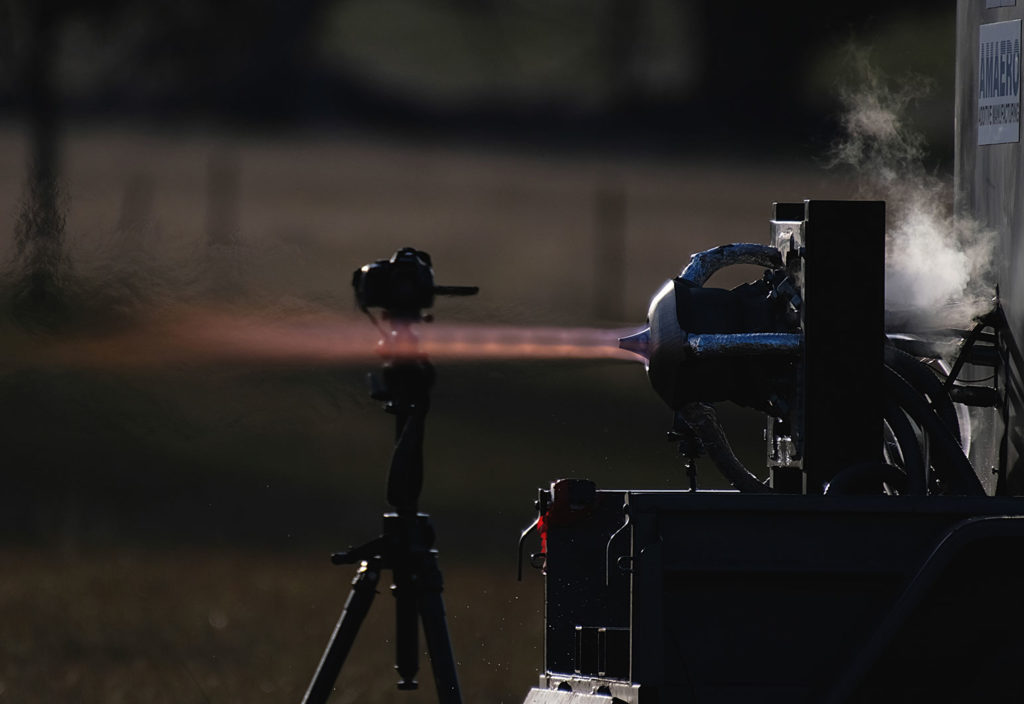An experimental rocket that never worked as hoped could finally fulfil its potential thanks to the efforts of a Melbourne startup.
When the aerospike rocket engine was developed in the 1950s, it seemed so full of promise.
Created by Rocketdyne, the Californian company that built the engines for NASA’s space shuttle, the aerospike aimed to overcome the inherent design inefficiencies of conventional bell-shaped rocket nozzles by maintaining aerodynamic efficiency across a range of altitudes.
More than five decades later, however, the much-hyped aerospike is yet to make an orbital flight.
That may soon change, as advances in technology continue to fuel the US$838 billion global aerospace and defence industries.
One young entrepreneur with his eye on the sky is Graham Bell, a PhD student from Monash University’s school of Mechanical and Aerospace Engineering and co-founder of Melbourne-based aerospace engineering company NextAero.
Bell and the company’s three co-founders recently designed, built and tested an aerospike engine, known as Project X.
And, thanks to the resources of additive manufacturing company Amaero, it took them fewer than four months to do it.
The X-factor
The seed of Bell’s future start-up business was planted during his aerospace engineering undergraduate studies at RMIT University when he joined a club to build a rocket engine on behalf of the Space Research Institute of Australia.
After graduation, Bell worked for a short time at CSIRO before beginning his PhD at Monash. At the beginning of 2017, he was among a small group of students to be approached by Amaero to work on the aerospike development.
“As graduate students, we took it on as a hobby project, and I knew that there was an opportunity to do something really fantastic,” Bell said.
“Amaero basically said, ‘We’ll give you a bit of cash and you can use any of our metal 3D printers’.”

Amaero brought strong credentials to the project. Two years earlier, it had collaborated with Monash University’s Centre for Additive Manufacturing and the French aerospace manufacturer Safran Electrical and Power to produce the world’s first 3D-printed jet engine.
Today, it manufactures components for clients across the globe through its partnership with Monash University.
Amaero CEO Barrie Finnin said the timeline for Project X was so short because he wanted to film the test firing to show at the Paris Airshow in June 2017.
“We have been working on a number of aerospace and defence projects, but our customers don’t let us publish things,” he said.
“The aerospike rocket project was basically a way for us to show the capability, but without disclosing any client-confidential information in the process.”
Finnin’s first impression of the Project X volunteer team was that they were “young, enthusiastic and a bit green”.
“They were dreaming big, and it was quite exciting watching them realise that they could get it to work,” he said.
“Graham took a leadership role within the team; he helped with project management and identified potential sites for the test firing.”
Preparing for take-off
Conventional rocket engines have a fixed size and bell-shaped form and so maximum efficiency and thrust can only be achieved at one level. As they increase in altitude, the flame spreads, the expanding gases are constricted and thrust is reduced.
If you turn this bell shape inside out and upside down, you get a form that closely resembles an aerospike. This design offers efficient thrust over a wide range of altitudes, as the engine’s exhaust is capable of expanding from sea level all the way up to space.
The aerospike’s complex design makes it almost impossible to manufacture using traditional means. For example, a conventional bell-shaped rocket is cooled via an intricate series of channels milled into the surface area, which allow for the flow of fuel. In an aerospike design, the shape is flipped inside out, so the geometry is internal.
“What we were able to do with additive printing was print all of that really complex geometry straight into the design in one go, so we didn’t have to do multiple manufacturing steps,” Bell explains.
Next up
After Project X, Bell and his co-founders formed NextAero to tap into the burgeoning global satellite industry.
Bell and his team were interested in the market for small-scale satellites, most of which have the mass of a standard washing machine.
“The market was opening up, but companies basically didn’t have any way to get into orbit,” Bell said.
“There were dozens of companies around the world rapidly building entire rockets and we wanted to make high-performance engines that perhaps they didn’t have time to research and develop.”
Bell and one of his co-founders spent eight weeks meeting with aerospace companies overseas to determine if there was a market for their business idea. They came home with a new sense of confidence and a new business plan, which they successfully pitched to a number of investors.
“We’ve managed to raise enough to build a commercial prototype of an aerospike for the small-scale satellite-launching market,” Bell said.
“We finished the design and now we’re building and testing.
“With a one-off like Project X, it was all or nothing. With a commercial prototype like this one, you need to get every step right.”
This article originally appeared as “Making the aerospike work” in the March 2020 edition of create magazine.
